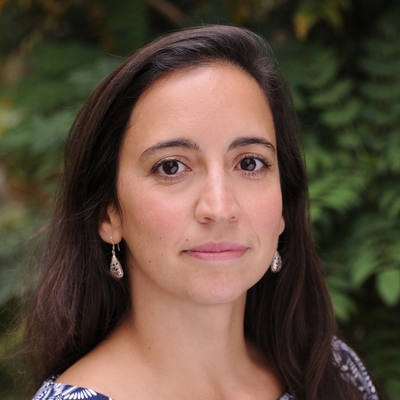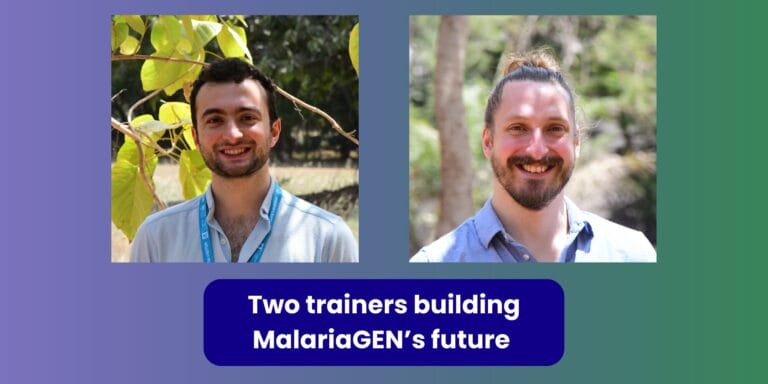
As part of International Women’s Day, COG-UK recognised Dr Ariani’s significant contribution to the success of Project Heron’s Covid sequencing programme. To find out more about this, and Cristina’s transition from researcher to end-to-end genome sequencing process manager, Heather Holve caught up with her over Zoom, while UK Covid lockdown measures were in place.
Tell me how you came to work with the MalariaGEN group at the Wellcome Sanger Institute.
I joined the Wellcome Sanger Institute as part of Dominic Kwiatkowski’s MalariaGEN Group in 2014, after completing my PhD on Aedes aegypt at Cambridge University. Until the start of the pandemic I used genomic tools to investigate the ecological and evolutionary processes that affect both malaria parasites and mosquitoes.
How did your research change as the pandemic spread?
Early on in the pandemic, the Wellcome Sanger Institute showed an interest in sequencing Covid samples. I really wanted to contribute to that very important project, so I spoke to my line manager Sonia Goncalves, Head of Service Delivery for MalariaGEN, about making that transition. At that point in the pandemic we didn’t know whether it was feasible to continue our research on malaria. We had just entered the first UK lockdown and it wasn’t clear whether we could keep working. When I found that I was in a position where there might be a lot of very relevant work on the Covid sequencing line, I wanted to contribute.
And that’s where it started. From the very beginning there was a lot of pressure to build something pretty much from scratch – receiving samples from different places, sequencing in near real time and providing data back to the community. It was an opportunity that I took because it happened. And it was a great opportunity to be part of something different and something extremely current.
How was the malaria genomic sequencing team affected?
The genomic sequencing of malaria for MalariaGEN did get affected. Most of the Wellcome Sanger Institute pipeline work, the operations to produce sequencing data, was focused on Covid sequencing. Campus was closed and there was a significant reduction in the number of staff running the pipelines. So, for a while, Wellcome Sanger was primarily sequencing and producing data for Covid and that affected MalariaGEN partners for sure.
Given that your background was in host-parasite interactions was it a difficult decision and transition to make?
It was a decision that was naturally happening for me, and the pandemic leading to Covid sequencing gave it a little push. I was already considering moving from pure academic work to a more operational role, that was something already in my mind. So, the opportunity to work with Project Heron on Covid sequencing at the Wellcome Sanger Institute was an obvious next step. Although it was something I wanted to do, it was difficult because as an academic you have ingrained concepts. I missed talking about science, I missed going to talks, doing data analysis and I found I missed coding! It’s a difficult transition, every transition has its challenges, but I like it.
What has been the highlight of your year working in Covid sequencing?
I’ve learnt a lot on operations and I’m very proud to have contributed significantly to the sequencing of nearly 300,000 Covid genomes by COG-UK in a year. The UK has done an immense job at sequencing so many genomes. And I’m happy that I have been part of this – ensuring that samples come into Sanger, arranging the arrival of samples, making sure they flow through the pipelines at the Institute, and making sure the stakeholders have what they need, in the format they need. I’m proud that as part of Sonia’s team we have achieved so much.
What has been the main obstacle of your year working in Covid sequencing?
The main obstacle is the timeliness for everything, it’s a major challenge. There are new demands all the time, because this is the common ground of the pandemic. The speed that we have to respond is amazing, we have to be able to adapt and change a strategy within a matter of hours.
Looking forward what do you see as the opportunities for you outside of Covid?
I now have experience of ensuring service delivery of the end to end processes in a high throughput facility. I also have developed a format for reporting back data to stakeholders. Given that the Institute was working on Covid during the pandemic, I think I can contribute where there is change and challenge. I will fit in projects where they need someone who has proven that they can adapt and change quickly.
Will you return to malaria research?
I don’t think it’s in my plans to go back to science – I can’t see myself doing science with my own hands again. But it is very hard to leave malaria, and I can’t see myself completely leaving. I’ve created such a strong bond with MalariaGEN partners, with the team at the Institute, and it’s too hard to say I’m going to leave. So no, I don’t think I am ready to leave malaria research.
Related publication


